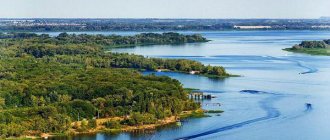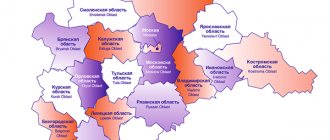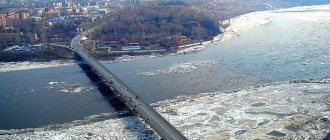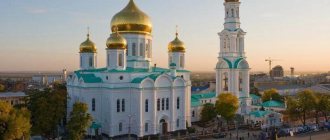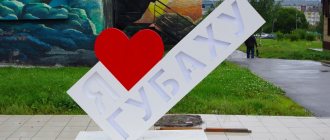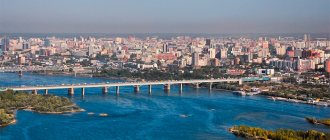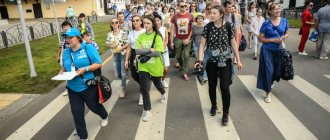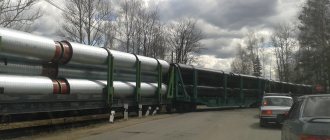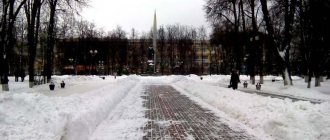Year of foundation: 1590
Conservatory building in Saratov
Saratov
- Russian city, center of the Saratov region. It is located on the right bank of the Volgograd Reservoir, approximately equidistant from Volgograd and Samara.
Saratov founded
(2) July 12, 1590, on the day of remembrance of the position of the belt of the Most Pure Mother of God. It was founded as a guard fortress on the site of the city of Uvek. Uvek was the third largest city of the Golden Horde, but in 1395 it was destroyed.
In the winter of 1613, there was a fire in Saratov, the city was completely destroyed and rebuilt again on the left bank of the Volga. In 1670, Stepan Razin subjected the city to a three-day robbery. In the spring of 1674, by order of the Tsar, the city was moved to the right bank of the Volga River.
In 1708 he was under siege by Bulavin's troops. And in August 1774, Emelyan Pugachev’s army surrounded and took the city after a battle. But soon Saratov came under the control of government troops.
In 1780, the city became the center of the Saratov governorship, later renamed the Saratov province. A large number of Russian Germans settled in the city and in the surrounding area; the “Office of the Office of the Guardianship of Foreigners” opened in Saratov - a control center for German colonists in the Volga region.
Saratov is the unofficial capital of the Volga region. The rapid growth of industry and trade in the city began at the end of the 19th century, after the completion of the Tambov-Saratov railway. The road connected the city with Moscow and St. Petersburg.
Until the end of the 1920s, Saratov was the largest of the cities of the Volga region (larger than Kazan, Nizhny Novgorod, Samara) and was often unofficially referred to as the “capital of the Volga region.”
The city developed rapidly during the Great Patriotic War; factories and military schools were evacuated from the western USSR. Until 1990, Saratov was a closed city, as several large defense industry enterprises operated in the city.
By decree of the President of the Russian Federation dated July 2, 2022, Saratov was awarded the honorary title of Russian Federation for the significant contribution of city residents to achieving Victory in the Great Patriotic War of 1941–1945, ensuring uninterrupted production of military and civilian products at industrial enterprises, and for the massive labor heroism and dedication shown. Federation " City of Labor Valor"
».
The road bridge across the Volga connects Saratov and Engels
Modern Saratov is a well-known center of higher education in Russia. In addition to one of the oldest universities in Russia, SSU, there are more than ten different universities in the city. The city is famous for its mechanical engineering, oil and chemical industries.
Attractions
Saratov is considered: a road bridge connecting it with the satellite city of Engels; Lipki Park; Trinity Cathedral; Saratov State Conservatory named after. L. Sobinova; remains of the ancient city of Uvek, a major center of the Golden Horde.
Interesting
, which is near Saratov, 16 kilometers south of the city of Engels, is the landing site of the world's first cosmonaut Yu.A. Gagarin.
The city is home to more than 830 thousand people (2020).
Day of the city
in Saratov it is celebrated in September.
General information and history of Saratov
Nowadays it can be considered a firmly established fact that Saratov was founded in 1590. In the 1580s, the first fortress cities appeared on the middle and lower Volga, designed to protect river caravans from Cossacks and nomads: Samara in 1586, Tsaritsyn in 1589. And the next year, Prince G. O. Zasekin and boyar F. M. Turov begin construction of a new fortress and call it “Sary Tau,” which means “yellow mountain.”
The situation is more complicated with determining the location of ancient Saratov. The first Saratov did not last long and was destroyed in 1613 - it was ravaged and burned either by the nomads who besieged the city, or by a detachment of the rebellious adventurer Zarutsky, a supporter of False Dmitry, who opposed the central government. Only in 1617 was Saratov restored on the meadow side, on the left bank of the Volga at the mouth of the small river Saratovka - one and a half kilometers above modern Engels.
In the 17th century, Saratov was a major trading center through which there was a trade route to Moscow and other cities. In the 18th century, Saratov became a major trading, merchant and administrative center, the main city of the Volga region for the trade of salt and fish.
At the beginning of the 20th century, Saratov was the largest city in terms of population on the Volga River. Until 1990, Saratov was closed to foreigners because there were many enterprises in the city that supplied the military industry and also carried out orders for the space industry. Today, Saratov is a major cultural, educational, industrial and entertainment center in the Volga region.
Climate and ecology of Saratov
The climate of Saratov is moderate continental with slight deviations from the norm. Winters are usually cold, with abundant snow cover. Sometimes there are thaws and sudden temperature jumps from -20 to 0. When the wind speed increases, a snowstorm begins, in which visibility sometimes drops to 10 meters. In February and March there are snow drifts, due to which many routes are blocked. The Volga freezes completely in mid-December, and is cleared of ice only at the end of April.
Spring is most often early, but sometimes in May there is a drop in temperature, followed by a sharp warming. It rains almost all spring, but closer to summer the weather becomes sunny and warm. Summer is usually hot and dry, with little rain, but there have been years when it rained for almost two months, sometimes as heavy as tropical rain.
The city has many green parks and squares, flower beds and beautiful fountains where you can relax from the bustle of the city.
Cosmonauts Embankment
In Saratov, the level of groundwater is high, because of this, the asphalt in the middle of the city periodically sinks. In the Volzhsky region there is a river, today enclosed in a collector and previously flowing along the bed of the Glebucheva ravine.
Due to the abundance of factories, Saratov has a mediocre environment. In recent decades, there has been severe pollution of the atmosphere and water environment from various sources of emissions. The total amount of emissions per year reaches 300 thousand tons of pollutants. Cars, which in most cases do not meet environmental standards, contribute their share.
12 km from Saratov in the village of Doktorovka, Tatishchevsky district, there is a military radioactive waste storage site. There are several missile silos in the same area. Therefore, we can say with confidence that the ecological state of Saratov is critical.
Population of Saratov
According to the latest statistics, as of January 1, 2014, the population of the city is 841 thousand people.
Regarding the population ratio by gender, at this time the life expectancy of men is 13 years lower than that of women. This predominance of the number of women over the number of men is observed from 20-24 years of age.
If we distribute the population by districts of the city, then the most densely populated district is Leninsky, with 270 thousand Saratov residents living there. In the Zavodsky and Kirovsky districts there are almost the same number of people: 190 and 192 thousand people, respectively.
Saratov. Conservatory
Until 1990, while the city was closed to foreigners, the main population consisted of Russians and Tatars. After the collapse of the Soviet Union and the opening of the city’s borders, a large flow of refugees from Uzbekistan, Tajikistan, Azerbaijan, Armenia, and Turkmenistan poured into Saratov. Today, about 135 nationalities live in Saratov. According to the 2010 All-Russian Population Census, the second largest nationality in the city is Tatars.
Popular message topics
- Viruses and antivirus programs
A virus is a program that can perform various actions on a device without user intervention. What can viruses do? Display texts of dubious content on the screen; - The duel and death of Alexander Sergeevich Pushkin
Alexander Sergeevich Pushkin. Today we can already say that this is perhaps one of the most authoritative writers and poets in all of Russian literature. Having lived a short life, only 37 years, he managed to leave a significant mark on history, - Good and Evil
From early childhood, our parents read fairy tales to us. And all fairy tales end the same way: good triumphs over evil. We empathize with the good fairy-tale heroes and sincerely want them to defeat the cunning and insidious villains.
Districts and real estate of Saratov
The city is divided into six administrative districts: Volzhsky, Frunzensky, Oktyabrsky, Kirovsky, Leninsky and Zavodskoy.
Saratov Map
Volzhsky district
The district was formed on October 26, 1934. The main part of the city’s monuments and its architectural ensembles are located here, more than 70 of them are of federal significance. The visiting card of the Volzhsky region is Cosmonauts Embankment. Among the interesting places one can note Teatralnaya Square - the main square of the city, Lipki Park, where all people without exception like to walk. In the summer, Lipki is filled with wireless Internet lovers - a Wi-Fi network is broadcast throughout the park.
Lipki Park
The new highlight of the Volzhsky district is the 38-story Elena building on Predmostovaya Square. There is an observation deck on the “Saratov Skyscraper”; the house itself is visible even from Engels.
Construction of Helena
Volzhsky district is a central district of the city, it includes several subdistricts:
- Yubileiny (Novosokolovogorsk village) is a residential microdistrict, colloquially better known as “Yubik”, “Yubileyka”. The population mainly lives in high-rise buildings, but towards the village of Zonalny there are often massive constructions of cottages.
- The village of Zonalny is a dacha and cottage area, the colloquial name is “Zonalka”. It mostly comes alive in the summer, during the holidays, but even in the winter it doesn’t look empty.
- An independent microdistrict of private houses was formed in the Glebuchevo ravine. Some of them burned down, and those that remained formed slums. Due to the fact that practically no one drives there, the entire area is overgrown with tall grass, and the roads have become completely unusable. The proximity to the collector and the swamp formed as a result of its breakthrough adds gloom and neglect to the ravine. There are bad rumors among the people about the ravine, and therefore people walk through it with caution.
You can buy real estate in the Volzhsky district at a price of 2.2 million rubles for a 2-room apartment with plastic windows and an iron door. In new buildings, the price can rise to 1.5 million rubles above the market price.
Frunze district
Large industrial area, scientific and cultural center. The most famous places are the State Conservatory, Kirov Avenue - “Saratov Broadway” with offices and shops located on it, the buildings of the Indoor Market and the Nikitin Brothers Circus, the “Children’s World” store.
Kirov Avenue
In Frunzenskoye, housing prices start at 2.4 million rubles for a 2-room apartment with all amenities. The price limit is in the range of 8-10 million for a 4-room apartment.
Oktyabrsky district
The Oktyabrsky district is the central and near-central parts of the city; its history dates back to March 25, 1917, when the Zheleznodorozhny district was formed. On March 2, 1920 it was renamed Pervy, and on December 15, 1934 - Oktyabrsky.
Most of the city's medical institutions are concentrated in this area, in the same area there are 5 higher educational institutions, and the favorite recreation place for Saratov residents is the City Park of Culture and Leisure named after Gorky, commonly known as Gorpark.
Gorpark
The cost of a 2-room apartment with an iron door and plastic windows averages 1.7 million rubles. Housing in new buildings is 100-200 thousand more expensive than the market price.
Kirovsky district
The largest district of the city, its population is about 129 thousand people. There is a railway station, a bus station and an airport in the area. All higher educational military institutions of the city are also collected here: the Saratov Military Institute of Internal Troops of the Ministry of Internal Affairs of Russia, the Saratov Military Institute of Biological and Chemical Safety and the Military Institute for Advanced Training of Specialists of the Mobilization Agencies of the Russian Armed Forces.
Kirovsky district of Saratov
Also included in the Kirovsky district is the Agricultural Institute microdistrict, with the military registration and enlistment office located in it; Then, just below, there are two very large microdistricts with a popular name - Shanghai 1 and Shanghai 2, where mainly private houses are located. The microdistricts border on Agricultural Institute and are located from Osipova Street to Rakhova Street, bounded by Simbirskaya Street from the east, and Tankistov Street from the west. There is no entertainment infrastructure. They got their name because of the close piling of houses on top of each other, sometimes even with their roofs touching. These areas are gradually turning into slums due to their unkemptness.
Leninsky district
With its residential residential neighborhoods Solnechny and Severny, the VSO and Elshanka neighborhoods, as well as the so-called “Molochka”, it is, in fact, the northwestern regional district of Saratov. The number of residents of the Leninsky district is about 269.8 thousand people. The district was formed on October 2, 1945. Notable in the area are the shopping and "Atrio".
Leninsky district of Saratov
VSO and Elshanka do not stand out in any way; these are ordinary residential areas, including both 5-story buildings and high-rise buildings. There is one on the outskirts of Elshanka. The Severny microdistrict is distinguished by an abundance of high-rise buildings, both old and new. Solnechny is a completely new microdistrict, built using modern technologies. The apartments there are spacious, with amenities. “Molochka” is a microdistrict located in front of the village “Solnechny”. The houses are mostly 5-story and high-rise, but there are also private ones. Tram route 11 passes through Molochka, which often gets stuck there in winter due to uncleaned rails.
New high-rise buildings in Leninsky district
In the Leninsky district, the cost of apartments starts from 2 million rubles for a two-room apartment and reaches 11 million for a 4-room apartment in the village of Solnechny.
Zavodskoy district
Formed on September 7, 1936 under the name Stalinsky. In November 1961, it was renamed Zavodskoy - in accordance with the name, it houses a number of the city’s largest factories. The district includes 16 villages: Nizhnyaya Strelkovka, Kalashnikova, Reinik, Uvek, Rokotova, Knyazevka, Teplichny, Verkhnyaya Strelkovka, Uglyovka, Komsomolsky, Sharkovka, Vorobyovka, Yungerovka, Sawmill, Yurish, Zaplatinovka, Muravlyovka.
Proletarka. Zavodskoy district of Saratov
Today there is no division between the villages, but some names, such as Uvek, Komsomolsky and Teplichny, have been preserved in the names of stops and in colloquial speech. The village of Teplichny is commonly called “Teplichka”, and Komsomolsky is called “Komsa”.
The oil refinery gave its name to the entire neighborhood around it. The houses there are mostly private, mixed with 5-story “Stalin” and “Khrushchev” buildings. The area is a typical slum, no people are visible in the private sector during the day, half of the private houses look abandoned, and in some five-story buildings the windows and doors in the entrances are broken.
In the Zavodskoy district, housing is relatively cheap compared to other areas. The cost of a one-room apartment starts from 800 thousand rubles, for a 4-room apartment they will require 7-8 million. Such a low cost is due to the large number of old housing, and the poor environment from operating factories.
the cost of living
Saratov is a city of different opportunities for residents who were born and raised here, as well as for visitors from other regions of the country.
The standard of living here can be called optimal and affordable, although the city government is not doing enough to improve the well-being of Saratov.
If you are planning to move here, you need to study the financial component of the move.
First of all, attention should be paid to the cost of renting and purchasing housing:
- elite development is taking place in the center of Saratov next to the Volga. For a 1-room apartment in this part of the city you will have to pay from 2.5 million to 3.3 million rubles;
- apartment in a new middle-class building – 1.2 million rubles;
- housing on the secondary market - about 1.2 million rubles;
- rent – 10 thousand rubles/month for economy option;
- rent of a comfort class apartment – from 15 thousand rubles/month.
Food prices in Saratov differ from the capital. In one week, about 3 thousand rubles are spent on food. You can save money if you buy food at markets. This is where city residents go.
The cost of products included in the social basket is as follows:
- chicken – 200 rub;
- bread – 30 rubles;
- milk – almost 40 rubles/1 l;
- 10 eggs – 50 rub.
You can find out more about prices for basic food products on the official website of the Government of Saratov.
Watch the video about prices for fruits and vegetables in Saratov markets.
Travel on different types of municipal transport costs 23 rubles. one way, and a taxi ride costs from 100 to 300 rubles.
Since 2022, housing and communal services tariffs have increased again, about which citizens are constantly complaining. They are not satisfied with the quality of service, high prices, and poor communications.
More information about housing and communal services prices can be found on the website of the Government of the Saratov Region.
Infrastructure of Saratov: roads and other troubles
As a result of bad roads, traffic jams constantly occur in Saratov. Everyday places where cars gather are Strelka and 1st Dachnaya. Congestion there occurs due to the abundance of bus routes and the narrow bridge, on which buses and minibuses sometimes stand in three rows, preventing oncoming traffic from passing. Another sore spot is Chernyshevsky Street. There are traffic jams here during rush hour, but you don’t have to stand for long. This is facilitated by the width of the street and numerous branches of adjacent roads, along which you can go around the problem area.
Transport in Saratov is presented in all types: from minibuses to buses and trains. Tram lines connect the Zavodskoy, Kirovsky and Leninsky districts, this allows you to get to your desired location with virtually no traffic jams. Due to noise and the allocation of separate traffic lanes, they want to reduce trams. Route 12, which ran along Bolshaya Gornaya Street and duplicated tram route 11, has already been removed.
Trolleybuses entangled Saratov with a network of wires no less than trams. The main streets of trolleybus routes are Moskovskaya, Chernyshevskaya, 50 Let Oktyabrya Avenue, Tarkhova and others. Trolleybuses, due to their independence from the traffic lane, are not going to be reduced.
Buses do not lag behind trolleybuses in covering the territory, and some routes cover the whole of Saratov and part of Engels. Due to their obsolescence, buses often break down, which causes traffic jams, which are mentioned above.
After the fleet renewal, the minibuses are mainly represented by foreign brands, but the drivers remained the same racers as they were on the Gazelles. That’s why you can often see two Mercedes or Peugeots racing from a traffic light on Chernyshevsky Street. As a result, minibuses quickly deliver passengers to stops and have time to do more on their flight. There were no traffic jams due to minibuses.
Electric trains deliver summer residents to their gardens in the summer, and in winter they are even used as an alternative to the bus. Getting there from Elshanka to the railway station will be many times faster than using other types of transport. There was a time when they wanted to make a light metro based on electric trains. The project remained at the discussion stage and was then forgotten.
Education in Saratov is developed at a level slightly above average: in some places there are not enough kindergartens and schools, and in others there are too many of them. The result is a long queue for training. In some areas of Saratov there are not enough schools, while in others there are too many. The result of this disorganization is that students are late for classes due to traffic jams.
Also, some schools are combined into one building, as happened with school No. 12, the building of which, under the auspices of the United Russia party, was renovated and expanded, and then the HEL (Humanitarian and Economic Lyceum) was “shared” there. Some schools do not have very good reviews for the quality of education and the methods of teaching students. There are several such schools in the Zavodskoy district and one in Volzhsky.
There are a large number of universities in Saratov, as well as branches of universities in large cities. Among them, educational institutions with legal and economic specialties stand out, for example, Saratov State Academy of Law (SGAP), Saratov State Socio-Economic University (SSEU). This explains the predominance of these professions over others, no less important, but less respectable. The classic Saratov State University is very popular among incoming young people.
Saratov State University
After the education reform, many universities were restructured and united under one name. For example, Saratov State Academy of Veterinary Medicine and Biotechnology, Saratov State Agricultural Academy named after. N.I. Vavilov and Saratov State Agricultural Engineering University were merged in 1998, the new institution was named Saratov State Agrarian University named after N.I. Vavilova.
The healthcare system of the population of Saratov includes numerous hospitals, clinics, maternity hospitals, dispensaries, sanatoriums, medical aid stations, pharmacies, as well as two educational institutions: a medical institute and a medical school.
Coat of arms
The coat of arms of Saratov is presented in the form of a French shield. Three silver sterlets are depicted on an azure background, oriented from the upper corners of the shield and the middle of the tip. The fish are positioned with their heads towards the center. The bottom one is depicted with its back to the left of the viewer. They form the Greek letter "upsilon". Sterlets symbolize the abundance of these water inhabitants in this territory.
The artistic composition is included in the State Heraldic Register of the Russian Federation under No. 212. Adopted by decision of the Saratov City Duma No. 13-108 of November 18, 1997.
Enterprises and work in Saratov
Saratov's industry has always provided the city with everything it needs. But since the mid-90s, factories began to close and reduce staff. So, for example, the lamp plant, SNIIM, machine tool plant, and oil plant went into oblivion. More recently, in 2008-2009, the Saratov Aviation Plant finally collapsed. Its unique equipment went under the hammer, and the vast territory is now being built up with houses and shopping centers.
The same thing is happening at other closed factories. Markets open on their premises, where all those workers who worked at the factories before the layoffs go to work. As a result of such actions, Saratov again turns into a trading city, as it was before. Half of the products that were produced in Saratov before perestroika are now imported from other cities or from abroad.
At the moment, several industrial giants remain working in Saratov. They will be discussed below.
The Saratov Electric Aggregate Production Association (SEPO) was founded on May 14, 1939, and is still the leader in Russian aggregate production. This is one of the largest enterprises in Russia, producing electronic and complex electrical products used in various sectors of the national economy. A significant volume of products consists of special units for aircraft engines. By-products of the enterprise are represented by Saratov refrigerators and freezers, automotive components, aviation components, road equipment, production and installation of printed circuit boards.
The Saratov Oil Refinery (short name - OJSC Saratov Oil Refinery) - part of the TNK-BP group - is one of the oldest Russian producers of petroleum products and was founded back in 1934. In recent years, the plant has been deepening oil refining, which allows it to increase oil refining volumes by more than 1.5 times. Currently, the plant produces more than 20 types of products and occupies one of the leading positions among industrial enterprises in the region.
Saratov Oil Refinery
You can also consider employment options at JSC Saratov Bearing, or JSC Saratovorgsteklo.
Today, several large shopping centers are open in Saratov, which provide their visitors not only with goods for sale, but also with a wide range of entertainment. It is appropriate to mention the Triumph Mall Saratov shopping center, Arena shopping center, Navigator shopping center, Atrio shopping center and Povolzhye shopping center.
Shopping center Arena in Saratov
What to see if you come with a child
In Saratov there is entertainment for the youngest travelers. It will be interesting and educational for a child to visit the museum complex “National Village”, because here you can see the dwellings of various nations: a Bashkir yurt, an Armenian house “khrtchit”, a Georgian estate, Russian peasant huts and much more. In addition, in the village you can try the national dishes of numerous peoples of Russia.
On the territory of the museum complex you can find a Korean pagoda and many other buildings
Also, the baby will have a great time in one of the oldest puppet theaters in Russia, Teremok. It began its work in 1936 and has never ceased to exist. Performances were held here even during the Second World War. The theater is located on Babushkin Import Street, at building 16. Ticket prices: from 150 rubles.
Another attraction that can captivate even the smallest tourist is the local circus. It was founded in 1873 and for more than a hundred years its arena has been hosting sold-out performances. This circus is also notable for the fact that it was here that the clowns Oleg Popov and Karandash, as well as Mstislav and Walter Zapashny, revealed their talents. The circus is located at the address: Chapaeva Street, building 61. Ticket price: from 600 rubles.
Criminal situation
Residents have differing opinions about the crime level in the city. Some consider the most criminal districts of Saratov to be Zavodskaya (Komsa, Kvartala) and Leninsky (especially Solnechny village). Others claim that Saratov is the quietest and calmest city. Many people remember the 90s, when Saratov was among the top ten in terms of the number of criminal groups and authorities. Everyone remembers the two most famous and sensational groups - “Chikunovskaya” and “Navolokinskaya”.
The Navolokin brothers Alexey and Alexander had workshops for the production of “leftist” wine and vodka products. Alcohol was stolen from wineries in Azerbaijan and transported in large quantities of five tons or more. The Navolokins’ younger brother was killed with a TT pistol in November 1991, and his group became headed by Chikun.
Chikunov Igor was born and raised in the Zavodskoy district, and was involved in boxing for a long time. Chikunov was desperate and daring, the first to start quarrels with other groups. Nobody wanted to mess with him. He was involved in racketeering and had the nickname “Wolf Man.” Many considered him the “godfather” of Saratov. Chikun's gang consisted of former Afghans and athletes. He controlled half of the city's commercial firms.
In the fall of 1995, Chikun’s rival, the authority figure Igor Davydov, nicknamed “Zuban,” was shot dead; his murder was attributed to Chikunov. And in November of the same year, in the building of the small enterprise “Groza”, located on Altynaya Mountain, Chikun himself was shot dead with ten members of his group. And at the beginning of February 1996, Alexei Navolokin’s older brother was killed.
In the underworld of Saratov, after the death of the largest authorities, a bloody war began for the redistribution of territory and spheres of influence. In June 2011, 14 members of a criminal group called “Zavodskie” were detained in Saratov. The group, repeating the experience of the 90s, was engaged in extortion from enterprises using sophisticated torture. Members of the group had climbing equipment to rob apartments on the upper floors. In December 2009, “Zavodskie” attacked the “Zoloto” store and stole jewelry worth half a million. The robbers were caught 5 minutes later on Kirov Avenue, but the jewelry has still not been found.
